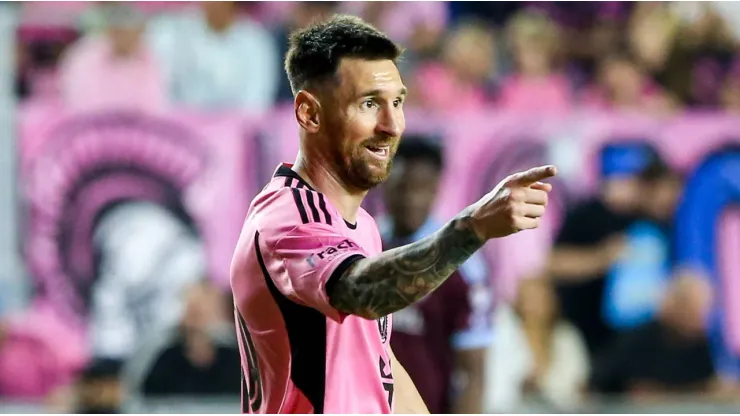Major League Soccer launched the ‘designated players’ rule in 2007 to allow David Beckham to join the league. Despite several changes, the rule’s purpose stayed the same: attract international stars who require major wages without going against the salary cap that instills parity in Major League Soccer. The current iteration of the rule states that the salary cap hit of designated players is $480,625, and those who arrive in the middle of the season count as half of that. However, the owner pays the rest of the player’s agreed total compensation.
For reference, the MLS salary cap in 2007 was just $2.1 million. Under the ‘Beckham Rule,’ the winger had a guaranteed salary of $6.5 million. However, it only accounted for $400,000 against the team’s salary cap. Yet, Beckham massively changed the outlook of Major League Soccer. He brought more eyes, interest and discussion about the league. The majority of designated players since Beckham have not furthered that discussion, and instead, they are ways for the league and its owners to pay more money for players without generating the desired buzz.
When scanning the current list of registered designated players in MLS, some names stand out. Lionel Messi tops that list, and his arrival in Major League Soccer in the middle of the 2023 season instantly paid dividends for the league. Subscriptions to MLS Season Pass rose and ticket prices skyrocketed, for better or for worse. Other notable DPs include Lorenzo Insigne, Christian Benteke and Xherdan Shaqiri, who each had strong European careers. Other DPs have developed sensationally in MLS. Thiago Almada, Cucho Hernandez and Hany Mukhtar have become some of MLS’s best players.
Still, that leaves massive gaps in other squads where DPs are not bringing in either quantitative success or interest and audiences.
Our Pick:Includes: Every regular season game, MLS Cup Playoffs, Leagues Cup, & More |
|
Are the designated players in MLS good enough?
Understandably, the 29 MLS clubs cannot each bring in a Lionel Messi. Moreover, no one would be able to benefit the league or a club like the Argentine has at Inter Miami. Yet, the rule is in place to provide financial freedom to clubs, clubs are simply not taking advantage of it.
Take Ryan Gauld for example. The Vancouver Whitecaps forward has done well with the Canadian side with 23 goal contributions in MLS play last season. However, he does not have a level of excitement that can court casual fans to the league. Yet, he ranked in the top 15 guaranteed salaries among those on a designated player contract. Does he deserve it based on his success with Vancouver? There is certainly an argument to be made in support of Gauld. But that is a comment more on the quality and popularity of the designated players than it is on Gauld.
Some of the MLS clubs will place designated-player contracts on those who are making marginally more than their related cap hit. Leonardo Campana is making just over $600,000 with Inter Miami, but the fact that he is on a designated player contract ensures that his cap hit is less than that. To be fair to Inter Miami, the salary cap is $5.21 million. Taking off a little bit of Campana’s salary hit, as well as carefully allocating other funds, allows Inter Miami to stay within the league’s parameters.
Ineffectively using the DP rule
Other clubs seem to ignore the potential a salary cap can have. CF Montreal has one designated player in Victor Wanyama. The former Southampton and Tottenham midfielder is making $1.8 million in total compensation. However, even before incorporating his salary deduction as a designated player, Montreal is under the salary cap. Mind you, Wanyama’s salary cap hit is one-fourth that, which means Montreal is not effectively spending money.
If MLS teams follow the example of Montreal and ineffectively use their designated players, the league as a whole cannot develop. Major League Soccer needs to have more intriguing matchups that fans will want to watch. That makes the possible acquisitions of Antoine Griezmann or Neymar that much more necessary for the league. Those two are examples of players that can move the needle.
PHOTOS: IMAGO
200+ Channels With Sports & News
- Starting price: $33/mo. for fubo Latino Package
- Watch Premier League, Women’s World Cup, Euro 2024 & Gold Cup
The New Home of MLS
- Price: $14.99/mo. for MLS Season Pass
- Watch every MLS game including playoffs & Leagues Cup
Many Sports & ESPN Originals
- Price: $10.99/mo. (or get ESPN+, Hulu & Disney+ for $14.99/mo.)
- Features Bundesliga, LaLiga, Championship, & FA Cup
2,000+ soccer games per year
- Price: $5.99/mo
- Features Champions League, Serie A, Europa League & Brasileirāo
175 Premier League Games & PL TV
- Starting price: $5.99/mo. for Peacock Premium
- Watch 175 exclusive EPL games per season








